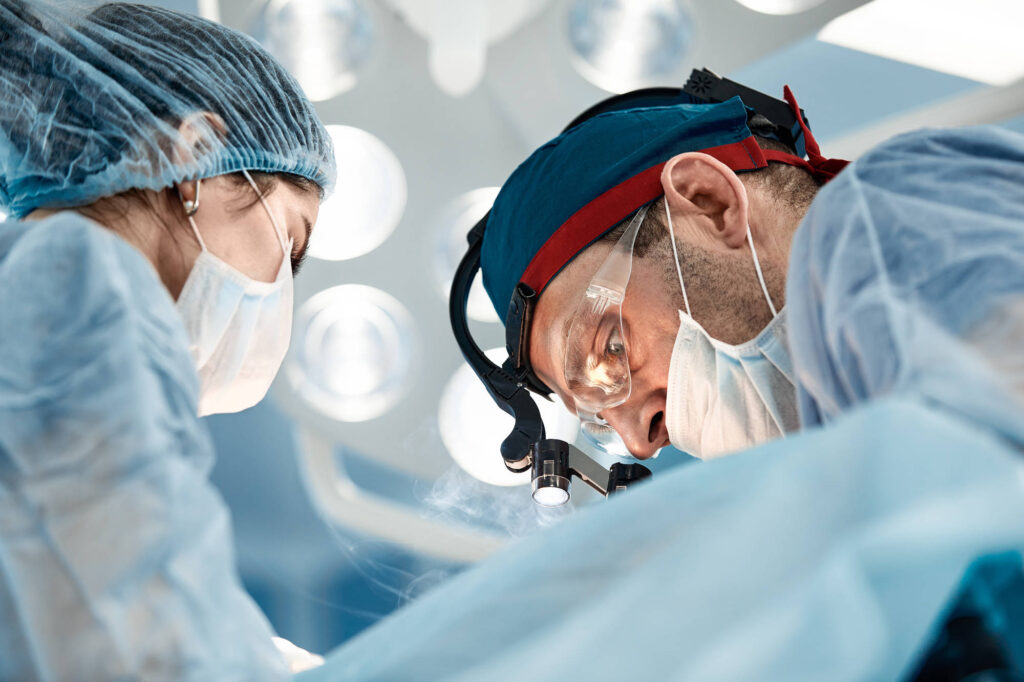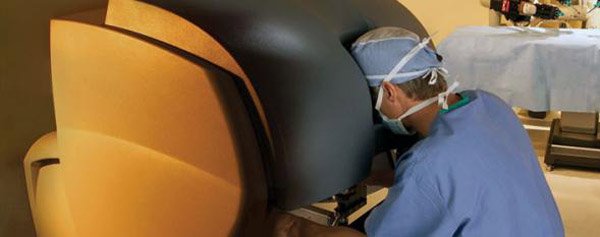Services
Surgery

Minimally invasive surgery is a procedure that is performed less invasively than traditional “open” surgical procedures. These surgical techniques usually involve use of laparoscopic instruments and are carried out through small incisions in the skin or through an anatomical opening.
Overview
Minimally Invasive Surgery
The Minimally Invasive Surgery team at Urology of Indiana is comprised of some of the most experienced urological surgeons in the country.
Minimally invasive surgery is a procedure that is performed less invasively than traditional “open” surgical procedures. These surgical techniques usually involve use of laparoscopic instruments and are carried out through small incisions in the skin or through an anatomical opening. Within Urology, minimally invasive surgery is most often used for kidney, bladder and prostate surgery, although new applications continue to evolve.
Minimally invasive surgery often results in less operative trauma for patients and less post-operative pain. Hospitalization is typically shorter with improved recovery time and quicker return to normal daily activities.
Experience
Urology of Indiana has been a pioneer in robot-assisted laparoscopic surgery. Robotic surgery is a newer form of minimally invasive surgery that uses robotic assistance to improve surgical precision.
Our team of surgeons have performed thousands of robotic laparoscopic prostatectomies, renal, adrenal, bladder and pelvic procedures. If you are considering surgery, you can trust the experience and expertise of our Minimally Invasive Surgery team.
Robotic Surgery

Overview
The robotic surgery team at Urology of Indiana is comprised of some of the most experienced surgeons in the country, having performed thousands of robotic prostatectomies, as well as the largest number of robotic partial nephrectomies and sacrocolpopexies in the region.
Through the enhanced surgical capabilities of the daVinci Robotic Surgical System, clinically-appropriate patients often experience improved clinical outcomes, including:
- Reduced trauma to the body
- Reduced blood loss and need for transfusions
- Less post-operative pain and discomfort
- Less risk of infection
- Shorter hospital stay
- Faster recovery and return to normal daily activities
- Less scarring and improved cosmesis
About Robotic Surgery
Robotic surgical technology was originally developed in the military as an attempt to perform remote surgery on injured soldiers in the battlefield. The Pentagon funded a robotic research project that was conducted by the Stanford Research Institute and the Massachusetts Institute of Technology. That effort ultimately produced what is known today as the da Vinci Surgical System.
The da Vinci Surgical System is a computer-enhanced, robotic surgical system which interposes a computer between the hands of the surgeon and the tips of micro instruments. The platform technology is designed to enable complex procedures of all types to be performed through tiny ports. It replicates the surgeon’s movements in real time, but cannot be programmed to perform surgical maneuvers independently.
Four Components
- The Console houses the master controls, which replicate the surgeon’s motions, and a powerful vision system that is controlled by foot pedals.
- The patient-side Cart provides robotic arms that execute the surgeon’s commands.
- The Endoscope provides high resolution, true-to-life 3-D images of the surgical area.
- The Wristed instruments support the surgeon while operating. They are designed with 7-degrees of movement that mimic the dexterity of the human wrist.
The da Vinci Surgical System will never replace the surgeon’s hands. It will, however, enable the surgeon to be more precise by enhancing the capability to perform complex minimally invasive surgery. The surgeon sits at the Console and uses the master controls. The da Vinci Cart is positioned next to the patient. The surgeon performs tasks at the Console with all the control he/she would in traditional, open surgery. The da Vinci, in turn, performs the exact same movements in concert with the surgeon.
da Vinci Prostatectomy
Radical prostatectomy is the surgical removal of the prostate gland and surrounding tissues, including the seminal vesicles.
Traditionally, surgeons used one of two open surgical techniques, including retropubic prostatectomy or perineal prostatectomy. With these open surgeries, patients typically remained in the hospital for 3 to 7 days after surgery.
However, an option for radical prostatectomy has become standard using minimally invasive techniques. This option is robotic assisted laparoscopic radical prostatectomy. Using the da Vinci Surgical System, this technique increases surgical precision by enhancing the capability to perform complex minimally invasive surgery such as radical prostatectomy. Among the benefits to patients, hospital stay can be reduced to as little as one day.
da Vinci Renal Surgery
Kidney or renal surgery has most often been performed via conventional open surgical techniques. However, robotic laparoscopic surgery is now available for nearly all types of renal surgery. For clinically appropriate patients, robotic laparoscopic renal surgery typically results in less post-operative pain, shorter hospital stay, less scarring, earlier return to work and positive clinical outcomes.
Robotic laparoscopic renal surgery is used extensively for both benign and malignant conditions of the kidney. Tumors of the kidney often require surgical removal. Surgical removal of the entire kidney is called a nephrectomy, while removal of a portion of the kidney is called partial nephrectomy. In addition to tumors, surgery is performed for benign conditions such and congenital obstruction and kidney cyst removal.
- Partial nephrectomy – Removal of only part of one kidney
- Radical nephrectomy – Removal of all of one kidney and the neighboring adrenal gland and surrounding tissues
- Pyeloplasty – reconstruction of the upper portion of the ureter near the kidney to remove obstruction
- Cyst decortication – removal and destruction of large kidney cysts
Our experienced team of surgeons provides the full range of renal surgery.
da Vinci Sacrocolpopexy
Sacrocolpopexy is a surgical procedure to correct vaginal vault prolapse where mesh is used to hold the vagina in the correct anatomical position. This procedure can also be performed following a hysterectomy to treat uterine prolapse to provide long-term support of the vagina.
Sacrocolpopexy has traditionally been performed as an open surgery. A 15-30 cm horizontal incision is made in the lower abdomen in order to manually access the intra-abdominal organs, including the uterus.
Robotic surgeons employ the da Vinci Surgical System to perform sacrocolpopexy for appropriate patients. As with all robotic procedures, da Vinci Sacrocolpopexy uses a state-of-the-art robotic surgical system designed to help your surgeon perform a minimally invasive surgery through small incisions.
For most women, da Vinci Sacrocolpopexy offers numerous potential benefits over a traditional open approach:
- Significantly less pain
- Less blood loss and need for transfusions
- Less risk of infection
- Less scarring
- Shorter hospital stay
- Shorter recovery time
- Quicker return to normal activities
As with any surgery, these benefits cannot be guaranteed, as surgery is patient and procedure-specific.
